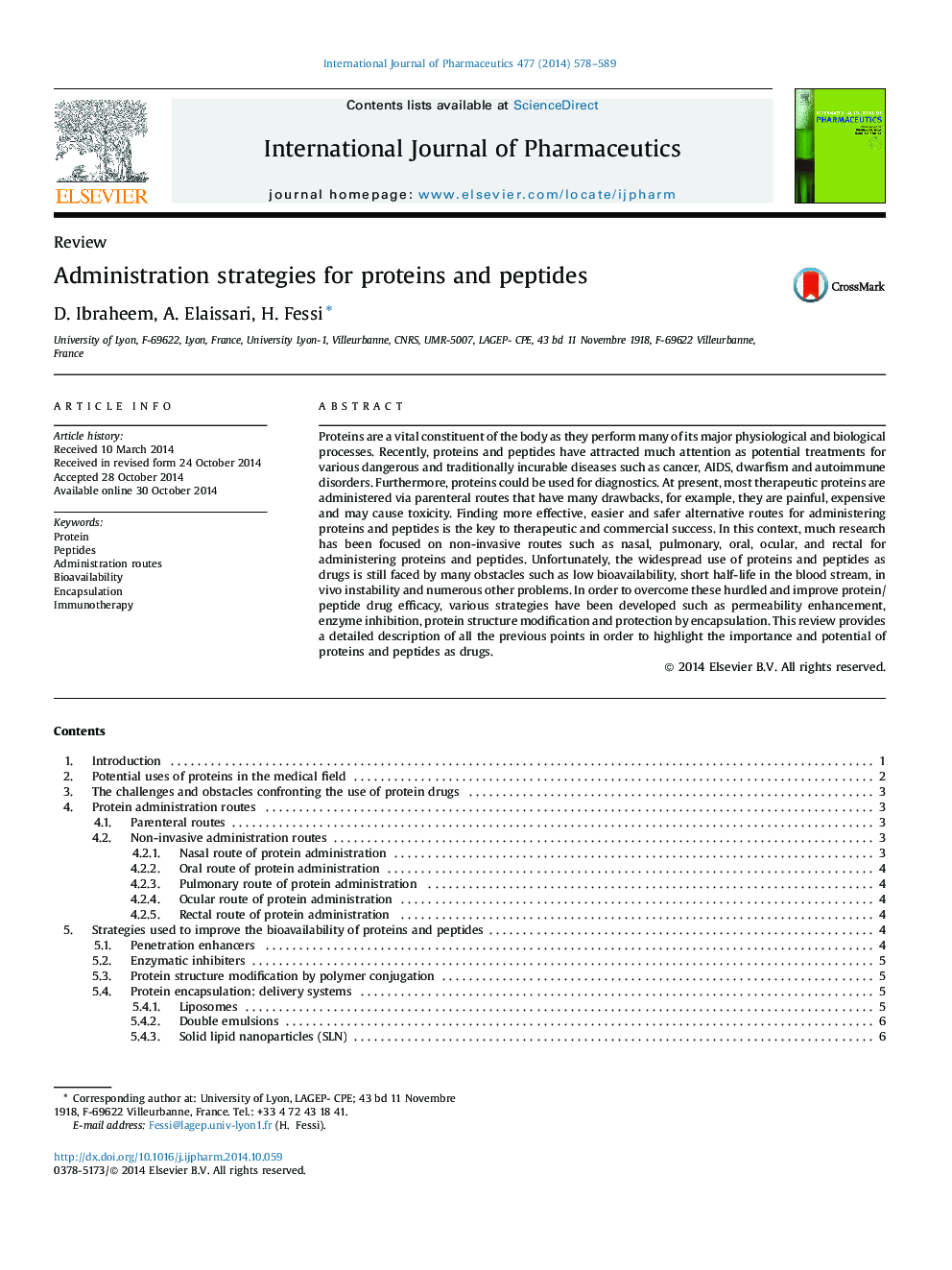| Article ID | Journal | Published Year | Pages | File Type |
|---|---|---|---|---|
| 5819176 | International Journal of Pharmaceutics | 2014 | 12 Pages |
Proteins are a vital constituent of the body as they perform many of its major physiological and biological processes. Recently, proteins and peptides have attracted much attention as potential treatments for various dangerous and traditionally incurable diseases such as cancer, AIDS, dwarfism and autoimmune disorders. Furthermore, proteins could be used for diagnostics. At present, most therapeutic proteins are administered via parenteral routes that have many drawbacks, for example, they are painful, expensive and may cause toxicity. Finding more effective, easier and safer alternative routes for administering proteins and peptides is the key to therapeutic and commercial success. In this context, much research has been focused on non-invasive routes such as nasal, pulmonary, oral, ocular, and rectal for administering proteins and peptides. Unfortunately, the widespread use of proteins and peptides as drugs is still faced by many obstacles such as low bioavailability, short half-life in the blood stream, in vivo instability and numerous other problems. In order to overcome these hurdled and improve protein/peptide drug efficacy, various strategies have been developed such as permeability enhancement, enzyme inhibition, protein structure modification and protection by encapsulation. This review provides a detailed description of all the previous points in order to highlight the importance and potential of proteins and peptides as drugs.
Graphical abstractDownload high-res image (151KB)Download full-size image
